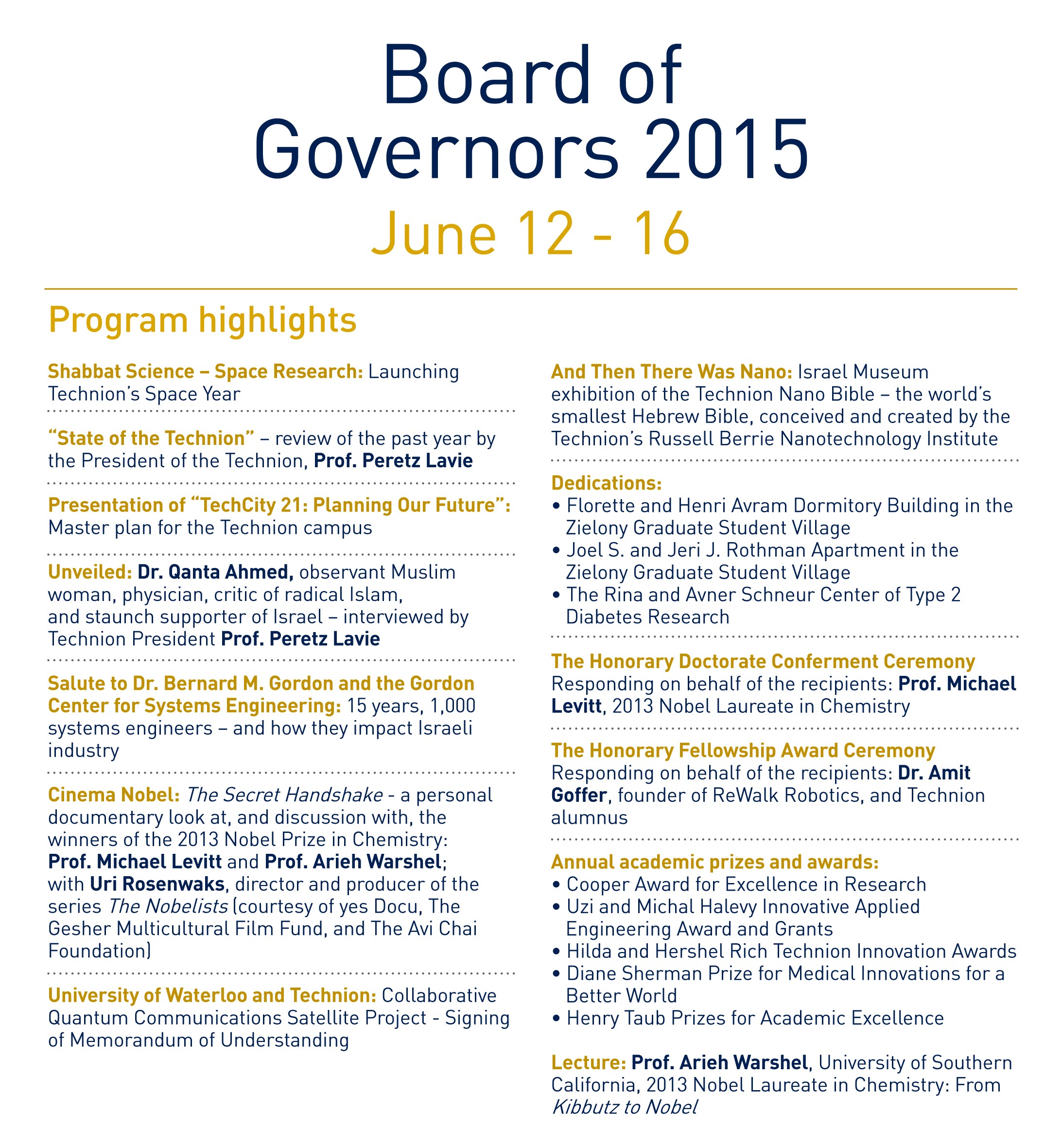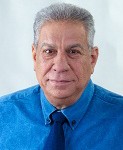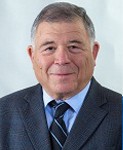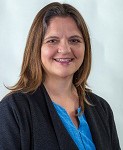Category: Uncategorized
Gates Foundation Supports Technion Innovation for TB
Haifa (Israel) – Technion – Israel Institute of Technology announced today that it will receive Phase II funding through Grand Challenges Explorations, an initiative created by the Bill & Melinda Gates Foundation that enables individuals worldwide to test bold ideas to address persistent health and development challenges. Professor Hossam Haick will continue to pursue an innovative global health research project, titled “Self-Administered Adhesive Patch for Detection of Tuberculosis”
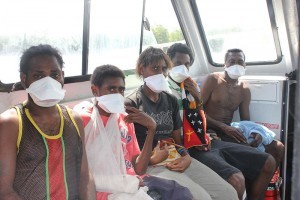
“In regions where poverty became a master, the Bill and Melinda Gates Foundations is an indispensable source to efficiently harness the wisdom of experts and the insight of the pertinent global health and development challenges. With the support of the Gate’s Foundation, we are developing an array of rapid, accurate, and affordable tool that shall contribute for increasing the survival rate of Tuberculosis patients, and, also, in arresting the disease transmission. Ultimately, we hope these advances could contribute for the democratization of health globally.” Said Prof. Haick
In 2012, Prof. Hossam Haick was awarded a Phase I grant for BMGF program. Grand Challenges Explorations (GCE) Phase I recognizes individuals worldwide who are taking innovative approaches to some of the world’s toughest and persistent global health and development challenges. GCE invests in the early stages of bold ideas that have real potential to solve the problems people in the developing world face every day. Phase II recognizes those ideas that have made significant progress toward implementation.
Prof. Hossam Haick’s project is one of the Phase II Grand Challenges Explorations grants announced today.
More than two billion people are estimated to be infected with M. tuberculosis (TB), from which 10% progress to active tuberculosis during lifetime. About 95% of TB cases occur in developing countries, where individuals live on $1 per day. The ultimate goal of the present project is the development of a stand-alone TB test consisting of adhesive patch that allows immediate diagnosis of TB from skin samples within 2-5 min at much lower costs and greater affordability than the current approaches. The novel TB sensing patch is designated for application on the chest of the patient, either in the clinic or by the patient at home, and will be suitable for children as well. The possibility of performing the test at home by the patient will allow the patient to participate actively in the prevention and detection of TB by continuous monitoring of at-risk populations such as health workers, family members of TB patients, smokers, HIV-carriers, etc. This 2-5 minute examination results in either a GREEN LIGHT when the user is healthy (i.e., has no TB) or RED LIGHT when active TB is present.
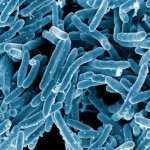
The development of rapid, accurate, and affordable sensing patches for diagnosis of “active TB pulmonary disease vs. non-TB pulmonary disease and latent TB” will contribute for increasing the survival rate of TB patients, and, also, in arresting the disease transmission. Successful completion of all of these short-term and long-term goals will provide TB sensing patch that could be used at resource-poor central reference laboratories, hospital and clinic laboratories, and/or at the point-of-care, thus helping to increase the TB screening and saving at least 400,000 lives every year.
Welcome to Technion’s new Ph.Ds
The Technion has awarded Ph.D. degrees to 193 of its students. At a festive and emotional ceremony the Technion’s president told the graduates and their families a brief history of the achievements of the Technion and its alumni over the years.
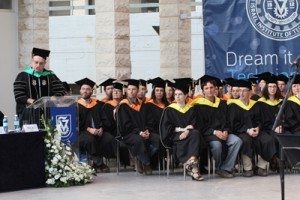
Dr. Stefania Pellegrinelli, the first graduate of the joint double-Ph.D. track at the Technion and the Politecnico di Milano addressed the gathering on behalf of the graduating students. Throughout her studies, whose curriculum was established as part of the cooperation between the Technion and the Italian university, Dr. Pellegrinelli was advised by professors from both institutions and spent a year at each of them, ultimately receiving a Ph.D. from both universities. Dr. Pellegrinelli, who spoke in both Hebrew and Italian, specializes in planning the robotic assembly in production lines, and during her Ph.D. studies designed a robotic production line for a subsidiary of the Italian car manufacturer Fiat. Her advisor at the Technion was Prof. Anath Fischer of the Faculty of Mechanical Engineering.
“I attended a high school that focused on academic studies and my favorite subject was math,” recalled Dr. Pellegrinelli after the ceremony. “For my Ph.D. studies at the Technion I decided to specialize in robotics. The relationship between lecturers and students at the Technion is much more personal and I really enjoyed my studies here.”
Texas & Technion join forces for Water
Texas and Israel’s Technion team up to build water system
California could learn a thing or two about innovative water technologies from university researchers in Israel and Texas, whose joint desalination project won the Honorable Mention award in a USAID competition. A prize of $125,000 grant will be used in the near future to build a groundwater treatment plant in Jordan.
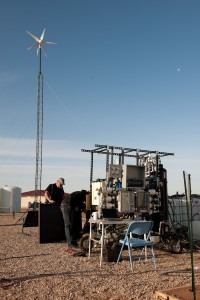
Driven perhaps by a common pioneering spirit or the aridness of their land, researchers at the Technion-Israel Institute of Technology in Haifa, Israel and the University of North Texas teamed up to enter the competition held by USAID— the United States Agency for International Development. The competition’s goal was to develop innovative technology for producing food and potable water in the Third World, using sustainable alternative energy. “By 2050, global water demand is expected to increase by 55%, and 70% of global water use occurs in food production,” said Christian Holmes, USAID Global Water Coordinator.
Researchers at the Technion’s Stephen and Nancy Grand Water Research Institute joined the competition at the request of researchers from the electrical engineering department at the University of North Texas. The American researchers, who focused on developing a solution to the alternative energy aspect of the competition, asked Prof. Carlos Dosoretz and Prof. Ori Lahav, researchers from the Technion Faculty of Civil and Environmental Engineering, to design a solution for the desalination aspect, and to submit a joint proposal. Other researchers from universities in Jordan, Nepal and Brazil also participated in this project.
“Hundreds of proposals from around the world were submitted in this competition,” explains Prof. Ori Lahav, who heads the Stephen and Nancy Grand Water Research Institute, where the desalination system was designed. “At the end of 2014 our proposal advanced to the semi-final stage, along with the proposals of seven other groups.” Six groups participated in the final round, which was held last month in the deserts of New Mexico. The participating teams were given two days to set up a complete, fully operational pilot system, and operate it autonomously for 48 hours to demonstrate its effectiveness in the field.

“The water treatment process was based on an innovative combination of three technologies – reverse osmosis, ion exchange and nano- filtration,” explains Prof. Lahav. “The challenge was to find a solution for problematic water characterized by particularly high concentrations of dissolved calcium and sulfate.” University of North Texas researchers used a combination of wind and solar energy to power the system.
The group in which the Technion participated included the engineer Ran Nahir and Dr. Liat Birnhack, of the Faculty of Civil and Environmental Engineering. The group was placed among the top three winners, making it eligible for $125,000 in financing for the implementation of innovative technologies in the Third World. Massachusetts Institute of Technology (MIT), jointly with Jain Irrigation Systems, won first place.
USAID is a division of the U.S. State Department with financial aid from Sida, the Swedish International Development Cooperation Agency and The Ministry of Foreign Affairs of the Kingdom of the Netherlands.
Harvey Prize Laureate Lectures
Distinguished Professors James P. Allison and Reinhard Genzel awarded Technion’s prestigious Harvey Prize.
Technion President, Prof. Peretz Lavie, awarded the Harvey Prize to Professor James P. Allison, prominent cancer researcher, and Professor Doctor Reinhard Genzel, internationally acclaimed astrophysicist, at a festive awards ceremony held at the Technion. Professor Allison, an immunologist from the University of Texas MD Anderson Cancer Center in Huston, Texas, was awarded the Harvey Prize in Human Health, and Professor Doctor Reinhard Genzel, an infrared and submillimeter experimental astrophysicist from the Max Planck Institute for Extraterrestrial Physics in Germany, was awarded the Harvey Prize in Science and Technology.
The Harvey Prize named after the late Leo M. Harvey (1887-1973), awards each year a sum of $ 75,000 to outstanding individuals who have made significant contributions in the fields of science and technology, human health, and the furtherance of peace in the Middle East. This prestigious prize is considered by many a precursor to the Nobel Prize; 13 Harvey Prize winners went on to win the Nobel Prize. Among them is esteemed Professor Shuji Nakamura who was awarded the Nobel Prize in Physics last December for inventing the blue LED, a major breakthrough in lighting technology.
Professor James P. Allison, who is the Chairman of the Department of Immunology at the MD Anderson Cancer Center, received the Harvey Prize for developing a new paradigm for cancer treatment and for his theoretical and practical contributions to cancer treatment, which transformed the fields of basic and tumor immunology. The MD Anderson Institute, affiliated with the University of Texas, is ranked as one of the nation’s best hospitals for cancer care in the United States.
Prof. Allison, who was born in Texas in 1948, specializes in the field of immunotherapy – treatment by means of strengthening the immune system – particularly in the context of cancer treatment. Allison has a longstanding interest in T cells, which play an important role in the immune system, and his research led him to discover a T-cell inhibitory molecule (known as CTLA-4) which can prevent them from attacking tumors. Following this discovery, Alison developed an antibody to block this inhibitory molecule in the hope that it will enhance anti-tumor immune responses and tumor rejection. His research led to the clinical development of Ipilimumab (Yervoy™), which was approved in May 2011 by the FDA for the treatment of metastatic melanoma. Today, Allison investigates possibilities for applying Ipilimumab and similar inhibitory drugs-treatments in treating other forms of cancer, such as lung, kidney, prostate, intestinal and breast cancer.
In his opening speech, Professor Pertz Lavie described Professor Allison as, “A person of courage and independence, who is not afraid of going against conventional wisdom. In the 1990’s, after the scientific community had all but given up on the idea of cancer immunotherapy – it was Prof. James Allison who kept the flame alive, and eventually succeeded.”
“As a kid I was very curious and always wanted to solve puzzles,” began Prof. Allison in his acceptance speech. “I wanted to be the first to know something that no one else did. I taught myself many subjects and so I got a lot of experience solving puzzles. This is my first visit to Israel and to the Technion, and I was amazed at the high scientific level of researchers and students that I met here. My research stems from my desire to better understand the immune system, and I am very pleased to have developed a drug to help people while on this quest. Doctors tend not to talk about cancer treatment in terms of ‘healing,’ because conventional treatments are always temporary, with cancer having a way of ‘stalking’ a person later on in life. However, there is justification in likening immunotherapy to ‘healing.’ Patients who were treated using our method have reached the 10 year mark, living far longer than the prognosis of a few short months.”
Professor Doctor Reinhard Genzel received the Harvey Prize for showing irrefutable evidence of a massive black hole in the center of the Milky Way (our galaxy) through his development of many nobel ground, airborne and space based instruments that enable the tracking of the motion of stars with unprecedented precision extremely close to the Galactic Center.
Prof. Genzel, who was born in 1952 in Bad Homburg v.d.H., Germany, is a faculty member at the University of California, Berkeley and is the Director at the Max Planck Institute for Extraterrestrial Physics in Garching, Germany. In 2002, Genzel discovered, along with research colleagues in Germany and California, a massive object at the center of the galaxy whose size was smaller than that of the solar system, yet its mass was more than 3 or 4 million than the mass of the sun, in other words, a very massive black hole. This determination was based on the exceptional acceleration of stars surrounding the Galactic Center. Genzel used innovative optical methods and infrared photography to overcome atmospheric disturbances and particles floating in space.
In his opening address, Professor Pertz Lavie shared an excerpt he found to best describe his achievements, “’Prof. Genzel developed instrumentation which enabled him to make outstanding discoveries, including evidence for a massive black hole in the center of our galaxy.’ Think of how amazing that is. We have with us today a scientist who not only made great and important discoveries, but also an innovator who has invented the tools he needed to make those discoveries. A real, twenty-first century Galileo Galilei.”
In his acceptance speech, Prof. Genzel thanked the Technion for this important prize and said, “This is a very meaningful event for me, and I am deeply moved to receive this prize on the year marking the 50th anniversary of diplomatic relations between Germany and Israel. I say this not only because of the past, but also because of the high quality of research and researchers coming out of Israel.
Astronomy is considered to be one of the most ancient sciences, yet the modern tools at our disposal today are expanding our expertise in this field, while pushing forward the frontiers of human knowledge. They allow us to observe, analyze and understand phenomena in space that were previously hidden from our view.”
The Harvey Prize awarded by the Technion was first given in 1972, through the foundation established by Leo M. Harvey from Los Angeles, in order to recognize significant contributions in the advancement of humankind in the areas of science and technology, human health and peace in the Middle East. This prestigious prize has been awarded to scientists from the United States, Britain, Russia, Sweden, France and Israel, among them Nobel Laureate Mikhail Gorbachev, former leader of the USSR, awarded the Harvey Prize in appreciation of his seminal initiatives and policies to lessen regional tensions; Nobel Laureate in Medicine, Professor Bert Sakmann; Nobel Laureate in Physics, Professor Pierre-Gilles de Gennes, Professor Edward Teller for his discoveries in solid state physics, atomic and nuclear energy; and Professor William J. Kolff for his invention of the artificial kidney.
Learning the Language of Proteins
“Science leads you in directions you hadn’t thought of, and you have to navigate your way through it.
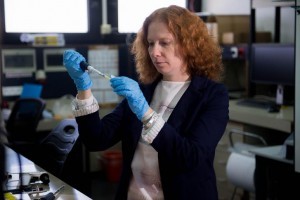
Photos: Shitzu; Technion Press Room
Assistant Professor Reut Shalgi returned from MIT to Israel thanks to the Technion, where she currently investigates regulatory mechanisms of protein synthesis at the Rapapport Institute of Medical Research.
“As a scientist, I have access to an endless world of research topics. Science leads you in directions you hadn’t initially thought of, and you have to navigate your way through it, but at the same time to let it lead you.”
Assistant Professor Reut Shalgi, who this week was awarded the prestigious Alon Fellowship for Outstanding Young Faculty, joined the ranks of the Technion faculty last year. Currently, as a member of the team at the Technion’s Rapapport Institute of Medical Research, she investigates the mechanisms of translational control by the ribosomes.
She graduated cum laude from Tel Aviv University in 2002, with a double major in Biology and Computer Science. Her final project explored what was back then the emerging field of Bioinformatics, which applies tools from statistics and computer science to biological and pharmacological research.
Thanks to her computer science skills Prof. Shalgi began, while still an undergraduate, to work in the hi-tech company of RadVision. But the search for new challenges led her to enroll in the Life Sciences Master’s degree program at the Weizmann Institute. With the guidance of Prof. Yitzhak Pilpel and Prof. Ron Shamir she used bioinformatical methods to study mechanisms that regulate gene expression – and was captivated by the world of scientific research. “During my Masters I realized I wanted to be a scientist – to understand how cells function, investigate the ways in which they can malfunction and find ways of correcting them.
“We work in the new and fascinating field of systems biology, increasingly integrating biology and computer science, and using genome-wide data and bioinformatical tools,” Assistant Professor Shalgi explains. “Systems biology gives us an broad view of the biological processes taking place inside the cell, whereas classic biology examines these processes in depth.” She went on to undertake her PhD at the Weizmann Institute, with Prof. Pilpel and Prof. Moshe Oren as her advisors. “My research focused then on the regulation mechanisms of micro-RNA – small molecules that are genes but that do not encode proteins. Every stage in protein synthesis is controlled by numerous factors inside the cell. I investigated the interrelationships and the coordination between different levels in this network.”
In 2009, after she completed her Ph.D., Assistant Professor Shalgi went to pursue her post-doctoral studies at MIT. Under bioinformatics expert Prof. Chris Burge and Prof. Susan Lindquist, a world leader in the field of chaperones (specialized proteins that facilitate the correct folding of other cellular proteins, which is essential for their proper function), Shalgi studied translation control mechanisms in cells under stress, as well as the interrelationship between chaperones and the ribosome. It was at this time that she discovered a previously unknown mechanism of translation control: chaperone-mediated ribosome pausing during the translation process. She continues to research this mechanism in her own lab.
The pausing occurs in response to extreme environmental conditions, and is mediated by the chaperones and their interaction with the ribosome. Upon relief from stress, the essential process of protein synthesis resumes.
“We think that this mechanism is also involved in neurodegenerative diseases, such as ALS, Alzheimer’s, Parkinson’s and Huntington’s diseases, among others,” she adds, “conditions in which proteins misfold and aggregate [accumulate and clump together]. We are currently studying how ribosome pausing is linked to these pathologies.”

She has very good memories of her five post-doctoral years in Boston, during which her first daughter was born – but “I really wanted to come back to Israel, to my family and friends. The Technion gave me a very warm welcome, and last October we returned to Israel – thanks to the Technion. I came back from MIT with several cutting-edge research methodologies, which I brought with me to my new lab at the Faculty of Medicine.”
One of these methods involves high throughput screening of protein-protein interactions performed by a robot, which can screen thousands of protein pairs per day and produce quantitative information on the interactions between each pair of proteins. Assistant Professor Shalgi analyses this data using bioinformatics tools, and maps the control network that governs the cell’s translation system and the interactions among the proteins: “The robot enables me to map out entire protein networks rapidly, and I use bioinformatics tools to analyze the cross-talk between the components in this network, and translation regulators.
“In my lab we integrate biology with genome-wide methodologies and bioinformatics to study the cell as a system. Our unique approach is to look at the cell as a system in which every component must not only function properly on its own but also be coordinated with all other components.”
She never felt that she had to compromise her scientific or research excellence with the move from MIT to the Technion. “The Faculty and the Technion offer me the highest standards possible. It’s a very diverse faculty with a good, strong interface between clinical and scientific research. The Technion’s new major in Medical Sciences offers the Faculty’s students an opportunity to get to know the science and possibly become researchers. Everyone knows what a medical doctor does, but not everyone understands what it means to be a researcher, what it is that researchers actually do on a day-to-day basis. An M.D. treats patients with the tools available to them, but the development of a new drug or treatment requires in-depth understanding of the mechanisms that lead to the disease, and that’s what we as researchers aim for. Some medical doctors manage to do research alongside the clinic, but it’s the full-time researchers who can delve deeply into the processes that cause the disease.”
Ten years, 122 companies – and a $60 million surprise
The BizTEC competition is celebrating its first decade, and the New York Times has some very good news: Google Capital will invest $60 million in the new start-up of Technion graduate Tomer London, who won first place in BizTEC in 2009
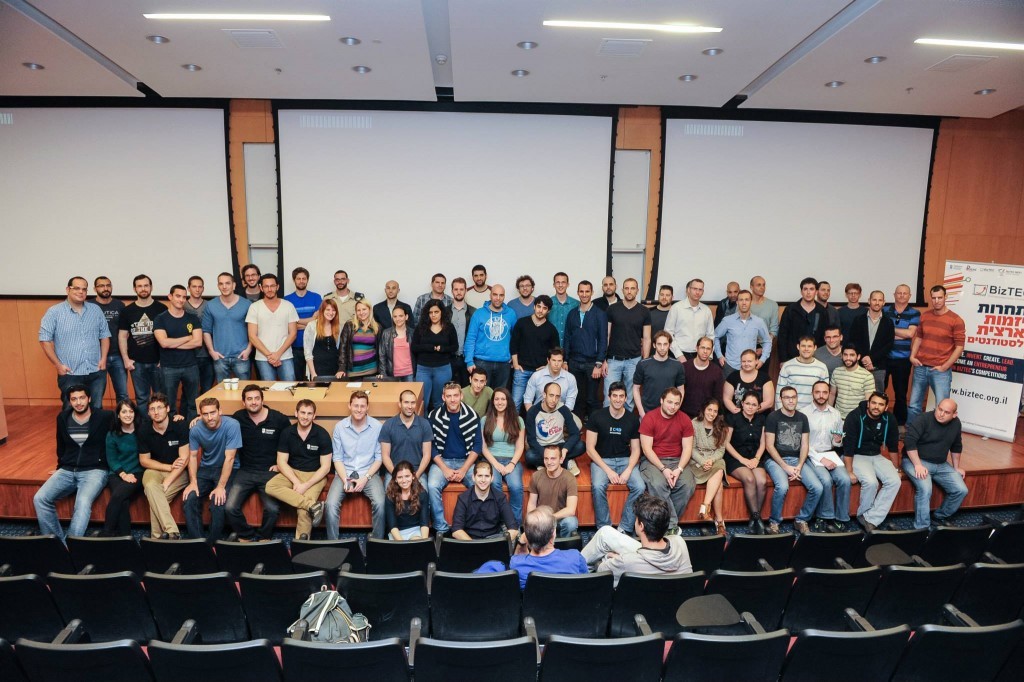
In early April, the New York Times reported an investment of $60 million in the new start-up of Technion graduate Tomer London. ZenPayroll is London’s second start-up and is already valued at over half a billion dollars. Google’s investment arm is behind this investment.
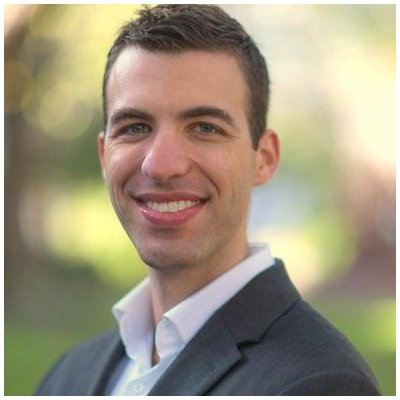
London’s first success in the field of entrepreneurship was recorded in 2009, when he won first place in the Technion led BizTEC competition with the company he had founded just months earlier. At the time, he was a student at the Faculty of Electrical Engineering, and in order to set up Vizmo he left his job at Intel and joined forces with fellow student Assaf Revach. The two outstanding students said at the time that the Technion gave them three things: “First, we became acquainted with each other here. Second – the Technion entrepreneurship and innovation laboratory and the diverse services that it provides. Third – the Technion Entrepreneurs Club. The Technion is undoubtedly Israel’s entrepreneurship incubator and it must stay that way.”
Tomer London isn’t the first to leap from the BizTEC springboard into the world of entrepreneurship. During these ten years, innovative projects in a wide range of fields have been developed as part of the competition. In 2006, the winner was LifeBond, which developed a liquid biological bandage that stops massive bleeding and has raised approximately $30 million since then.
The winner in 2007 was PolyTouch, with a technology for streamlining laparoscopic hernia surgery (the company was sold some three years ago for $40 million). In 2008 – DataStrata, an interactive system that allows hotel guests to order services at the hotel and from the outside, (the system is already in operation at various hotels). 2009 – Vizmo, as stated, which developed a system enabling callers to order services during their conversation with the call center. 2010 –Windward, an accurate digital mapping system for oceans and seas, including territorial waters and vessels, which has raised $5 million since then. 2011 – Pixtr, which has developed algorithms for automatically enhancing photos. 2012 – Yevvo, an app that allows sharing of live video by smartphones (last year it raised $3.7 million, and now it has raised $14 million and changed its name to Meerkat). 2013 – Breezometer, an app for monitoring air pollution levels by smartphone (the company raised $600,000, and will open offices in the US this year after the product is launched there). In 2014, the winner was Augmedics, with a support system for surgeons using 3D simulation (three months later, the company joined a leading technology incubator).
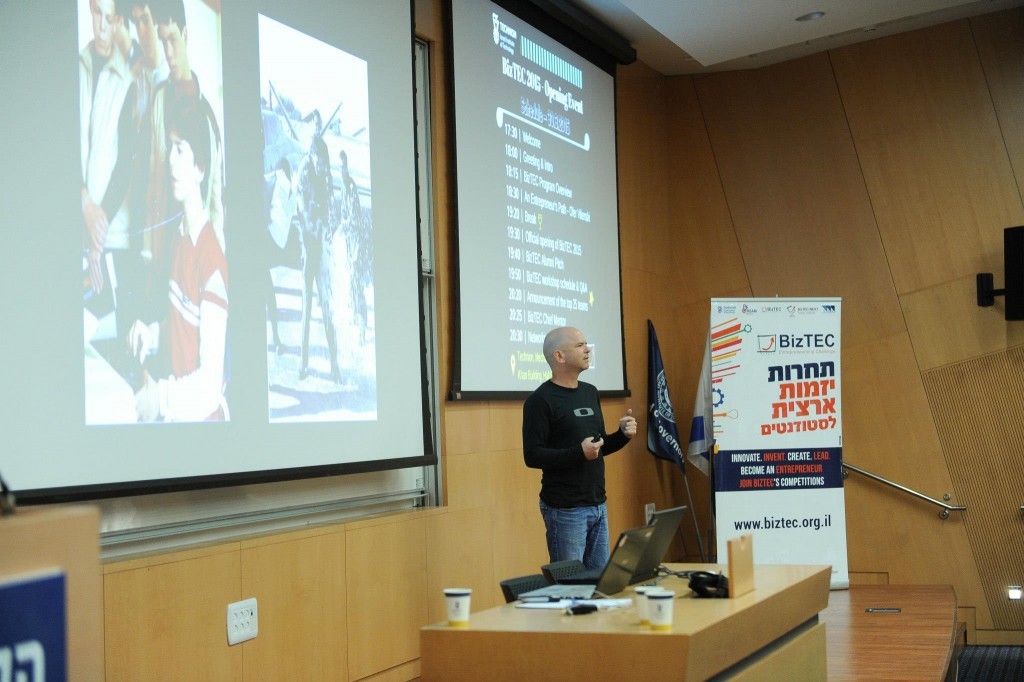
The BizTEC competition was established at the Technion in 2005 as a students’ initiative, designed to foster entrepreneurship among students at the Technion, and over the years has become Israel’s leading student entrepreneurship competition. Today, the competition is open to students for all degrees and to recent graduates. Participants include students from around 15 campuses in Israel.
This year, the tenth anniversary of its establishment, over two hundred student-entrepreneurs entered the contest, 60% of them students at the Technion. On March 30, the opening event for this year’s competition was held at the Technion. The keynote lecture at the event was delivered by entrepreneur Ofer Vilenski, who spoke about entrepreneurial motivation and “the road from idea to success story”. Another speaker was Nissan Elimelech, founder of Augmedics and BizTEC winner in 2014. The event was attended by around 200 young entrepreneurs, former participants in the competition and senior industry figures. Out of 80 competing teams, 30 teams were selected. They will participate in a yearlong program that includes lectures, workshops, guidance by industry-leader mentors, working in the accelerator, and a Demo Day, where the winning team will be announced. The prize for the winners: $10,000.
During its ten years of existence, the competition has produced 122 startups, which have raised over $100 million. “Start-up companies rise and fall on the quality of the team,” says competition director Tomer Aharonovitch, “and our job is to help students realize their ideas towards the establishment of a successful company.” Rafi Nave, director of the Bronica Entrepreneurship Center at the Technion, says “all participating teams address a real problem or unmet need, thus, they all have genuine potential to achieve business success. Furthermore, the main thing is not winning the competition, but rather the experience that the teams acquire, that provides them with the skills essential to business success and especially the motivation to initiate and innovate.”
Waterloo & Technion Research Alliance
Donation funds expansion of research between leading innovation universities
A $1.6-million gift to the University of Waterloo and Technion-Israel Institute of Technology by The Gerald Schwartz & Heather Reisman Foundation is enabling world-changing research in a range of disciplines, including research into lung disease and quantum computing.
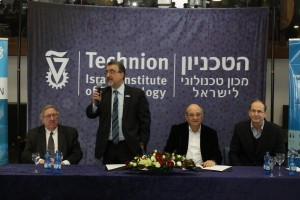
V.P. University Research, University of Waterloo, Feridun Hamdullahpur, president and vice-chancellor of the University of Waterloo, Prof. Peretz Lavie, Technion President and Prof. Oded Shmueli, former Executive Vice President for Research at the Technion.
“This gift shows what a partnership between two of the world’s top innovation universities supported by the vision of Gerald Schwartz and Heather Reisman can accomplish,” said Feridun Hamdullahpur, president and vice-chancellor of the University of Waterloo. “This visionary donation is already allowing us to accelerate progress in the key areas of quantum information science, nanotechnology and water. Collaboration between Waterloo and Technion will lead to new innovations that will help to shape the future of communities, industries and everyday life.”
”The collaboration between the University of Waterloo and the Technion focuses on joint research between Israeli and Canadian scientists in areas crucial to making our world a better place”, said Technion President Prof. Peretz Lavie. “I cannot think of a better partner for such projects than the University of Waterloo, and it is the vision and generosity of Gerald Schwartz and Heather Reisman that are making this promising partnership a reality”.
Among the researchers the gift supports, Professor Frank Gu will expand his work into targeted drug delivery for eye diseases to include pulmonary diseases.
Targeted drug delivery uses nanotechnology to carry medicine directly to the diseased area improving the effectiveness of the treatment and minimizing side effects by reducing toxicity in other parts of the body.
With highly efficient and effective drugs currently available for many diseases and conditions, researchers are advancing the management of disease by improving delivery of the drug rather than developing new treatments.
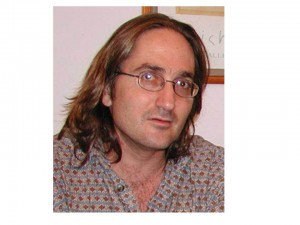
“There are many organs that we can live without but we can’t survive without a lung. The lung is such a critical component to quality of life,” said Prof. Gu, from the Faculty of Engineering at Waterloo and Canada Research Chair in Nanotechnology Engineering. “The problem with these drugs is they aren’t getting to the right target. Our goal is to make these particles so small and so smart, and efficiently transport these therapeutic compounds to the right place.”
The research is a joint project between Waterloo’s Gu from the Waterloo Institute for Nanotechnology and Prof. Josué Sznitman, from the Faculty of Biomedical Engineering and the Russell Berrie Nanotechnology Institute at the Technion, an expert in targeted drug delivery systems in the nasal area.
Prof. Sznitman: Premature newborn infants are frequently born with a deficiency of pulmonary surfactant, the soapy liquid that lines our lungs and is essential for easing every breath we take. Surfactant Replacement Therapy (SRT) is used to treat premature infants where artificial surfactant is instilled in the intubated neonate. Often, however, the liquid has to be administered more than once and such interventions remain a distressing experience for a newborn. Our work is aimed at improving strategies for SRT delivery where clinicians need to know how much of the initial dose will reach the targeted airways.
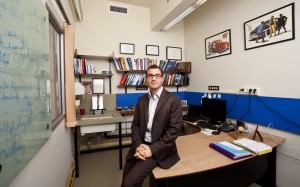
Given the success of drug delivery research, being able to focus on conditions of the lung is considered an opportunity to revolutionize treatment for conditions that are highly prevalent and affect large numbers of people.
Gu’s project is funded by a grant awarded through the Waterloo-Technion Research Cooperation Program. The program was created to facilitate joint research projects between Israeli and Canadian scientists in the areas of quantum information science, nanotechnology, and water. Funding for the cooperation program is part of an overall $1.9 million donation from The Gerald Schwartz & Heather Reisman Foundation.
The Waterloo-Technion Research Cooperation Program is also funding research into quantum computing. The ultimate goal of quantum information science is to build a scalable, universal quantum computer. A quantum computer will provide computational capabilities that cannot be achieved with classical computers for applications including database search, machine learning, drug design, information security and more.
One of the challenges of building a quantum computer is controlling the quantum systems to behave the way we want because they are extremely sensitive to any disturbance.
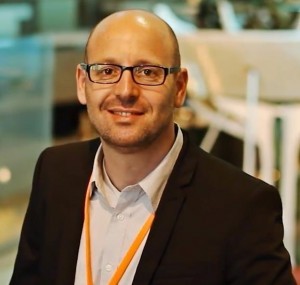
“Along with our colleagues in Technion’s Qubit Group, we will explore theoretical and experimental algorithms to cool quantum systems and thus reduce noise,” said Raymond Laflamme, Executive Director of the Institute for Quantum Computing (IQC) at Waterloo. “Quantum computation allows the most precise and efficient processing allowed by nature.”
“Heat-bath algorithmic cooling” – first suggested by Tal Mor and collaborators, and first implemented by Laflamme and collaborators – is an important method for cooling quantum systems using quantum algorithms and heat-flow analysis instead of using conventional physical cooling.
“It is great to have this opportunity to advance much further this field of research, and especially – together with this excellent team from IQC”, said Tal Mor, the coordinator of the Technion’s Qubit Group (TQG). “The main goal for establishing TQG was precisely for such purposes of advancing collaboration with world leaders in the field of quantum computing and information sciences, and the main goal of this current research is to advance algorithmic cooling much further together with TQG’s and IQC’s experts in (nuclear and electron) magnetic resonance and magnetic imaging.”
The new project includes Laflamme, IQC faculty Adrian Lupascu and Jonathan Baugh, and Professors Aharon Blank, Tal Mor and Itamar Kahn of Technion.
The Waterloo-Technion Research Cooperation Program was established in March 2014 beginning with a joint conference funded by The Gerald Schwartz & Heather Reisman Foundation and held at Technion’s main campus in Haifa, Israel. Gu and Laflamme’s work are two of 10 new projects between the two universities funded by the $1.6 million gift, shared between the two universities. Other projects range from the removal of organic pollutants in drinking water to an interdisciplinary research project at the interface of soil science, groundwater hydrology, biogeochemistry and geophysics.
Independence Day – A Trailblazing Trio
Three Technion alumni will light torches at the opening event for Independence Day at Mt. Herzl. This year 14 “trailblazing Israelis who made the world a better, safer, more interesting and more advanced place” were chosen to light the torches.
Raphael Mehoudar
At 20, when he was an IDF academic cadet, Rafi Mehudar developed the dual-quantity flushing system, which is in use today in almost every Israeli home. At the same time, he developed an irrigation system that waters a square area – in contrast to the circular area sprinklers. The Standards Institution of Israel was very impressed by the young inventor, and hired him to work there part-time after his discharge from the IDF.
Netafim, which had heard about the pressure regulator developed by Mehudar, also approached him – and the rest is history. Mehudar invented the drip pipes that have changed the agricultural world, and today, at 70, some 400 patents are registered in his name. According to the Ministerial Committee for Ceremonies and Symbols, “the invention of the drip pipes was an agricultural breakthrough for Israel and the world and contributed to tremendous savings in irrigation water. The drip pipes made it possible to build communities and develop agriculture even in arid regions in countries plagued by starvation”.
Dr. Gavriel Iddan
When Gavriel Iddan was an engineer at RAFAEL (the Hebrew acronym of the Armament Development Authority), he conceived a revolutionary idea: a capsule camera that a patient would swallow and which would photograph his digestive system. The digestive system is long and convoluted, such that it is “unknown territory” that is very difficult to map via external imaging.
For a decade Dr. Iddan worked on his invention, and in 1998 RAFAEL founded Given Imaging, which develops and markets the PillCam. In 2001 the PillCam was approved by the U.S. Food and Drug Administration and today it is sold around the world.
The PillCam, which weighs just a few grams and is 26 millimeters long, contains an advanced miniature video camera. The patient swallows the PillCam, which traverses his entire digestive tract in about 8 hours and constantly transmits to an external recorder. This is a diagnostic test that does not require hospitalization and allows the patient to continue his daily routine (work, leisure, sports). Doctors and researchers from around the world agree that the PillCam has revolutionized diagnosing digestive disorders.
Alice Miller
Alice was born in South Africa and immigrated to Israel at age 6. She always dreamed of being an astronaut and obtained her civilian pilot’s license at age 20 and began university studies as an IDF academic cadet at the Technion Faculty of Aerospace Engineering.
After earning her B.Sc. Miller completed her military service as an officer in the Israeli Air Force. Following her discharge, she worked as CEO of a few companies and at a certain point moved to a small village in India. During her years in Israel she lived at her home in Kibbutz Hukok.
Following the IAF’s refusal in 1995 to accept her for pilot training, Miller petitioned the High Court of Justice against the IDF and the Ministry of Defense, demanding that the court orders the air force to allow women to train as pilots. “I could not be accepted because I had the wrong chromosomes, and to me that seems illogical,” said Miller in an interview. She herself was not accepted to the pilots’ course, but following her victory at Israel’s Supreme Court, other opportunities were opened for women in the navy and air force. The Ministerial Committee for Ceremonies and Symbols noted “her struggle promoted the achievement of gender equality throughout Israeli civic society.”
And Then There Was Nano
The Shrine of the Book Celebrates 50 Years with Renewed Exhibition Space, Special Displays
And Then There Was Nano features The Smallest Bible in the World from the Technion
Concurrent exhibition dedicated to Shrine’s iconic architecture
Two special displays and a new exhibition space were inaugurated yesterday to commemorate the 50th Anniversary of the Shrine of the Book, home of the Dead Sea Scrolls and part of The Israel Museum, Jerusalem, which opened to the public in April 1965.
And Then There Was Nano: The Smallest Bible in the World, features the world’s tiniest version of the Hebrew Bible, created at the Technion-Israel Institute of Technology. The Nano Bible serves as a contemporary complement to the Dead Sea Scrolls, the oldest Biblical manuscripts in the world, providing audiences with a unique opportunity to examine the technological evolution of the Hebrew Bible from antiquity to the postmodern era.
On view concurrently, The Architecture of the Shrine of the Book is devoted to the unique history and design of the Shrine itself, an iconic work of modernist expressionist architecture, designed by Frederic Kiesler and Armand Bartos. Part of the Israel Museum’s anniversary celebrations throughout 2015, these special installations pay tribute to the Shrine of the Book’s opening in April 1965 as a prelude to the inauguration of the Museum’s entire campus.
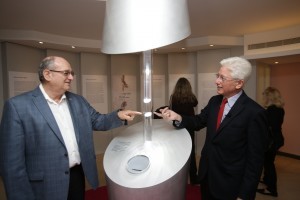
The new exhibition space was inaugurated on April 20th with the display of And Then There Was Nano: The Smallest Bible in the World, revealing to the public for the first time the world’s smallest copy of the Old Testament. Developed by the Russell Berrie Nanotechnology Institute at the Technion in Haifa, the nano bible showcased in And Then There Was Nano is accompanied by the incredible story of the world’s smallest Hebrew Bible etched onto a microchip no larger than a grain of sugar. The exhibition includes narrative presentations explaining the story behind the creation of the Nano Bible and detailed media through which the Hebrew Bible has been interpreted over time, tracing the path from the Biblical Nation to the Start-Up Nation.
“This exhibition writes a new chapter in the journey of the Book of Books from antiquity to the present – from the 2,000-year-old Dead Sea Scrolls to the 21st-century Nano Bible,” said James S. Snyder, Anne and Jerome Fisher Director of the Israel Museum. “This remarkable technological achievement will bring to a broad audience the context of the narrative of the Shrine of the Book and of the history of Biblical text from the ancient Dead Sea Scrolls to the most cutting-edge technology. It also marks a joint celebration with the Technion, whose Russell Berrie Nanotechnology Institute created the Nano Bible to mark the 50th Anniversary year of the Shrine and of the Museum.”
“Technion is delighted to partner with the Israel Museum, and to take part in its 50th anniversary celebrations,” said Technion President, Prof. Peretz Lavie. “The Nano Bible exhibition is a fascinating confluence of history, culture and cutting edge science – where the Land of the Bible meets the Start-Up Nation.”
What is the Nano Bible?
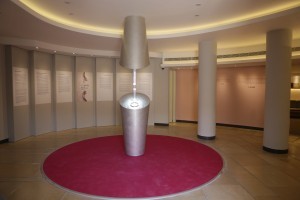
The Nano Bible is a gold-plated silicon chip the size of a pinhead on which the entire Hebrew Bible is engraved. The text, consisting of over 1.2 million letters, is carved on the 0.5mm2 chip by means of a focused ion beam. The beam dislodges gold atoms from the plating and creates letters, similar to the way the earliest inscriptions were carved in stone. The writing process takes about an hour and a half. The letters belong to a font unique to this technology and appear darker against their gold background. In order to read the text, it is necessary to use a microscope capable of 10,000 times magnification or higher.
Employing a modern incarnation of an ancient writing technique, this technological marvel demonstrates the wonders of present day miniaturization and provides the spectator with a tangible measure of the achievable dimensions. Dense information storage is not unique to human culture: The blueprints of all organisms are stored by nature at even higher densities in long DNA molecules and transmitted in this form over generations.
The term “nano” derives from the Greek word nanos, meaning “dwarf.” The unit nanometer measures one billionth of a meter, a ratio similar to the size of an olive compared with the entire planet earth. Nanotechnology makes it possible to construct new materials stronger and lighter than steel, to desalinate water more efficiently, to deliver medications to designated parts of the body without harming surrounding tissues, and to detect cancerous cells in early stages. At the dawn of the Nano Age, scientists and engineers are discovering ways to harness such exquisite control over the elementary building blocks of nature for the benefit of mankind and our planet.
The Nano Bible was conceived of and created by Prof. Uri Sivan and Dr. Ohad Zohar of the Russell Berrie
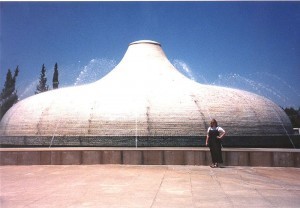
Nanotechnology Institute at the Technion – Israel Institute of Technology, Haifa. It was made by engineers in the Sara and Moshe Zisapel Nanoelectronics Center and the Wolfson Microelectronics Research and Teaching Center. The first of two copies was presented by the former President of the State of Israel, Shimon Peres, to Pope Benedict XVI during his visit to Israel in 2009. The chip on display in the Israel Museum was produced especially for the Information and Study Center of the Shrine of the Book.
And Then There Was Nano is curated by Dr. Adolfo Roitman, Lizbeth and George Krupp Curator of the Dead Sea Scrolls and Head of the Shrine of the Book. It was made possible through the generosity of the Dorot Foundation, the Russell Berrie Foundation and Joan and Arnold Seidel.
The Architecture of the Shrine of the Book
Marking the Shrine of the Book’s 50th anniversary, this exhibition is devoted to the design of the Shrine itself – an icon of modernist architecture – and to its architects, Frederick Kiesler and Armand Bartos. On display are preliminary sketches of the Shrine by Kiesler, shown to the public for the first time, as well as examples of his “correalistic” furniture that illustrate his distinctive approach to design and architecture.
The exhibition also features photographs documenting the Shrine’s building process and its early years, when it served as a site of pilgrimage to photographers and to the public at large.
The Architecture of the Shrine of the Book is curated by Osnat Sirkin, Associate Curator, Department of Design and Architecture, and is on display through April 26, 2016.
The Israel Museum, Jerusalem
The Israel Museum is the largest cultural institution in the State of Israel and is ranked among the leading art and archaeology museums in the world. Founded in 1965, the Museum houses encyclopedic collections ranging from prehistory through contemporary art and includes the most extensive holdings of Biblical and Holy Land archaeology in the world, among them the Dead Sea Scrolls. Over its first 50 years, the Museum has built a far-ranging collection of nearly 500,000 objects through an unparalleled legacy of gifts and support from its circle of patrons worldwide.
The Museum’s 20-acre campus, which underwent comprehensive renewal in 2010 designed by James Carpenter Design Associates and Efrat-Kowalsky Architects, features the Billy Rose Art Garden, the Shrine of the Book, and more than 225,000 square feet of collection gallery and temporary exhibition space. The Museum also organizes programming at its off-site locations in Jerusalem at the Rockefeller Archaeological Museum, where it presents archaeological artifacts from the Land of Israel; and at its historic Ticho House, a venue for exhibitions of contemporary Israeli art.
The Shrine of the Book houses the Dead Sea Scrolls, among these the world’s oldest biblical manuscripts, as well as other rare biblical manuscripts. This monumental structure has become an icon in Israel and around the world, its shrine-like interior affording visitors a rich spiritual experience.
The Dorot Foundation Dead Sea Scrolls Information and Study Center in memory of Joy Gottesman Ungerleider was inaugurated in 2007 and reopened in April 2015 in honor of the Fiftieth Anniversary of the Shrine of the Book. In establishing the Foundation, Gottesman Ungerleider followed in the footsteps of her father, philanthropist D. S. Gottesman, who helped support the construction of the Shrine in 1965 and contributed to the purchase of the Dead Sea Scrolls.
The Museum is celebrating its 50th anniversary throughout 2015, with a year-long program devoted to an exploration of Israel’s aesthetic culture in the 50 years before and after its founding.
Take a virtual tour of the exhibition.
New technology for early detection of stomach cancer
The innovative method, developed at the Technion, identifies persons at risk for developing stomach cancer and for detecting tumors at an earlier stage. The prestigious journal Gut, which published the research, notes that the detection method is quick, simple, inexpensive and non-invasive.
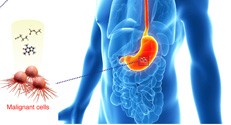
Innovative gastric cancer-detection technology developed by the Technion can be used for the early detection of stomach cancer and for identifying persons at risk for developing the disease. The new detection method, based on breath analysis, has significant advantages over the existing detection technology: Gut reports that the new method is quick, simple, inexpensive and non-invasive.
Gastric cancer is one of the most lethal forms of cancer and in most cases, its diagnosis involves an endoscopy (the insertion of a tube into the esophagus, requiring that the patient fast and receive an intravenous sedative). Treatment is aggressive chemotherapy, radiation and the full or partial removal of the stomach. The disease develops in a series of well-defined steps, but there’s currently no effective, reliable, and non-invasive screening test for picking up these changes early on. Thus, many people succumb to stomach cancer only because it was not diagnosed in time.
The new technology, developed by Prof. Hossam Haick of the Wolfson Faculty of Chemical Engineering, can be used to detect premalignant lesions at the earliest stage, when healthy cells start becoming cancerous.
The research, published in Gut as part of the doctoral thesis of Mr. Haitham Amal, was conducted in conjunction with a Latvian research group headed by Prof. Marcis Leja, based on the largest population sample ever in a trial of this type. 484 people participated in the trial, 99 of whom had already been diagnosed with stomach cancer. All the participants were tested for Helicobacter pylori, a bacterium known to increase the risk for stomach cancer, and two breath samples were taken from each person.
The first sample from each participant was analyzed using the GCMS technique, which measures volatile organic substances in exhaled breath. The researchers noted that GCMS technology cannot be used to detect stomach cancer because the testing is very expensive and requires lengthy processing times and considerable expertise to operate the equipment.
The second breath sample was tested using nanoarray analysis, the unique technology developed by Prof. Haick, combined with a pattern recognition algorithm.
The findings:
- Based on the concentrations of 8 specific substances (out of 130) in the oral cavity, the new technology can distinguish between three groups: gastric cancer patients, persons who have precancerous stomach lesions, and healthy individuals.
- The new technology accurately distinguishes between the various pre-malignant stages.
- The new technology can be used to identify persons at risk for developing gastric cancer.
- The diagnosis is accurate, regardless of other factors such as age, sex, smoking habits, alcohol consumption and the use of anti-oxidant drugs.
In short, the nano-array analysis method developed by Prof. Haick is accurate, sensitive technology that provides a simple and inexpensive alternative to existing tests (such as GCMS). This new technology offers early, effective detection of persons at risk for developing stomach cancer, without unnecessary invasive tests (endoscopy). In order to assess the accuracy and effectiveness of the new, a wide-scale clinical trial is currently under way in Europe, with thousands of participants who have cancerous or pre-cancerous tumors.
About Prof. Hossam Haick
Prof. Hossam Haick, who joined the senior staff at the Technion Wolfson Faculty of Chemical Engineering in 2006, has been working since that year on the development of innovative, non-invasive technology for detecting cancer and other diseases. This technology is based on an “electronic nose” – an apparatus capable of detecting illnesses by analyzing a patient’s exhaled breath.
Prof. Haick, a native of Nazareth, completed his Ph.D. studies at the Technion by the time he was 27 and went to the Weizmann Institute of Science in Rehovot and Caltech Institute of Technology in California. He returned to the Technion in 2006 and his research group was awarded one million euros in grants by the European Union, which was very impressed by his research into artificial olfactory systems. Today he heads a consortium that includes Siemens and several universities, research institutes and companies in Germany, Austria, Finland, Ireland, Latvia and Israel. Since joining the senior faculty in the Chemical Engineering Department in 2006, Prof. Haick has won dozens of awards, grants and international honors. These include the Marie Curie Excellence Grant, European Research Council (ERC) grant and the Bill & Melinda Gates Award. Prof. Haick was nominated to MIT’s list of the 35 leading young scientists worldwide, received the Knight of the Order of Academic Palms, from the French Government and won the Hershel Rich Technion Innovation Award (twice), as well as the Tenne Prize for Excellence in the Science of Nanotechnology. He has also been recognized for his outstanding teaching skills and is the recipient of the Yanai Prize for Academic Excellence. In 2014, at the initiative of the president of the Technion, Prof. Haick headed an MOOC (Massive Open Online Course) in nanotechnology and nano-sensors that had an enrollment of 42,000.
Prof Haick is a faculty member at the Russell Berrie Nanotechnology Institute.
For further details: Gil Lainer – 058-6882208, Doron Shaham – 050-3109088
A Journey Unlike Any Other
Learning from the past to safeguard our future: 32 Technion students travel to Poland as part of the International March of the Living program organized through the National Union of Israeli Students
“The journey to Poland is as important as any other subject we learn at the Technion. After all, first we all need to be human beings living in a civilized society.”
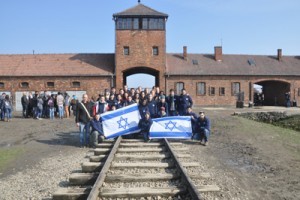
The Technion delegation included 32 students – the largest number in Technion history, and this year’s largest university student delegation. The delegation spent a week in Poland as part of the educational tour organized by the National Union of Israeli Students, under the direction of Roy Hanani from the tour company ‘Mool Nevo”. “We offer an alternative approach to Poland tours,” explains Hanani. “For us, the journey begins long before boarding the plane and continues long after returning to Israel. The journey is actually a tool for critical thinking, to enhance social awareness and involvement in society. Our goal is for participants to gain insights from this experience, to fundamental questions such as what makes us human, what is our responsibility as individuals in society, as citizens, as Jews. We certainly try to steer it clear from taking on a nationalist direction, while not ignoring the unique Jewish aspects of the Holocaust.”
Alon Cohen-Naznin, who headed the delegation and serves as the Vice-Chairman of ASAT said, “This journey, which took me to places where my late grandfather Arie Viceberg had been and where he lost all of his family members, filled me with a sense of victory. It is a great privilege and honor to tread on this ground, at the hardest sites in the history of the Jewish people, alongside wonderful people representing Israel’s college and university students.”
According to Technion student Smadar Boyam, the journey has been very important and significant. “At our age, we are mature young adults, which makes us more focused on the journey itself and less so on the social aspects of the trip and excitement about a trip abroad as compared with high school students. There was something very practical, educational and informative on this tour.” Learning about the holocaust is especially personal for Smadar because her maternal grandmother had escaped from Poland to Siberia, along with her parents and older brother during World War II. After the war, she returned to Poland to discover that all of her relatives were murdered at the Sobibór extermination camp. She and her nuclear family eventually made an Aliyah to Israel in 1950, at around the same time her paternal grandmother made an Aliyah with the group of Holocaust survivors known as the ‘Tehran Children.’ “About a quarter of my family were murdered in Sobibór, and from the remaining three-quarters, nearly none survived.”
Smadar recalled that the most emotional parts of the trip was when the delegation unexpectedly met with Holocaust survivors along the tour, one of whom they encountered within the ruins of a gas chamber. “He was leaning on a stick, with an Israeli flag wrapped around his shoulders, and he had rolled up his sleeve so that the number tattooed on his arm was visible.” ‘I saw my father sent to this place,’ he said. This statement really hit it home for me – suddenly you see before you a man that remembers his own father being sent here in rather than trying to comprehend a statistic about an inconceivable number of people who perished here during the Holocaust. I returned from the trip with a lot of questions for my grandmother, in the hopes that one day I would be able to return here with a more personal focus.”
Miriam’s story, who managed to survive the Majdanek concentration camp, was one of the survival stories that were followed over the course of the journey. Miriam often said: “Holocaust and Heroism Remembrance Day represents your grandfather and me. I – a ghetto and concentration camp survivor (Holocaust), and Grandpa – a partisan – he represents the heroism.” Their granddaughter, Inbar Shriber, a Technion master’s student from the Faculty of Chemical Engineering, joined this year’s delegation. “This trip clarified just how wrong this distinction between holocaust and heroism truly is, because anyone who was capable of maintaining their humanity through this cruel period is a hero. From now on, for me, both of these concepts are one in the same. Tracing the path my grandmother took from Warsaw to Majdanek was an empowering experience for me. I felt proud of my family and my country and I view it as a victory over the Nazis.”
Inbar speaks positively about the heterogeneous make up of the Technion delegation – made up of students from all academic levels, different age groups, men and women, single, married and some already parents. “This unique composition contributed to the diversity and richness of the discussions we had over the course of the tour. I feel that this journey sharpened my Israeli identity, and hightened the awareness of the dangers of inflammatory rhetoric, racist attitudes and militant behavior to society.”

